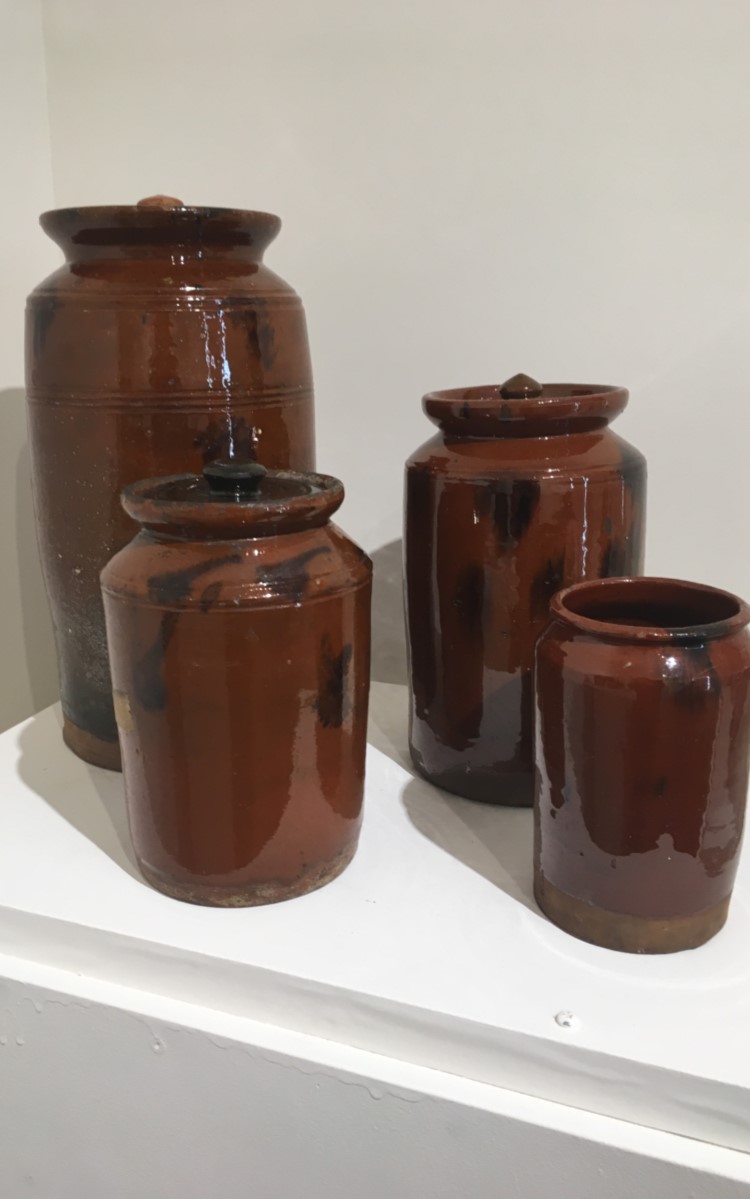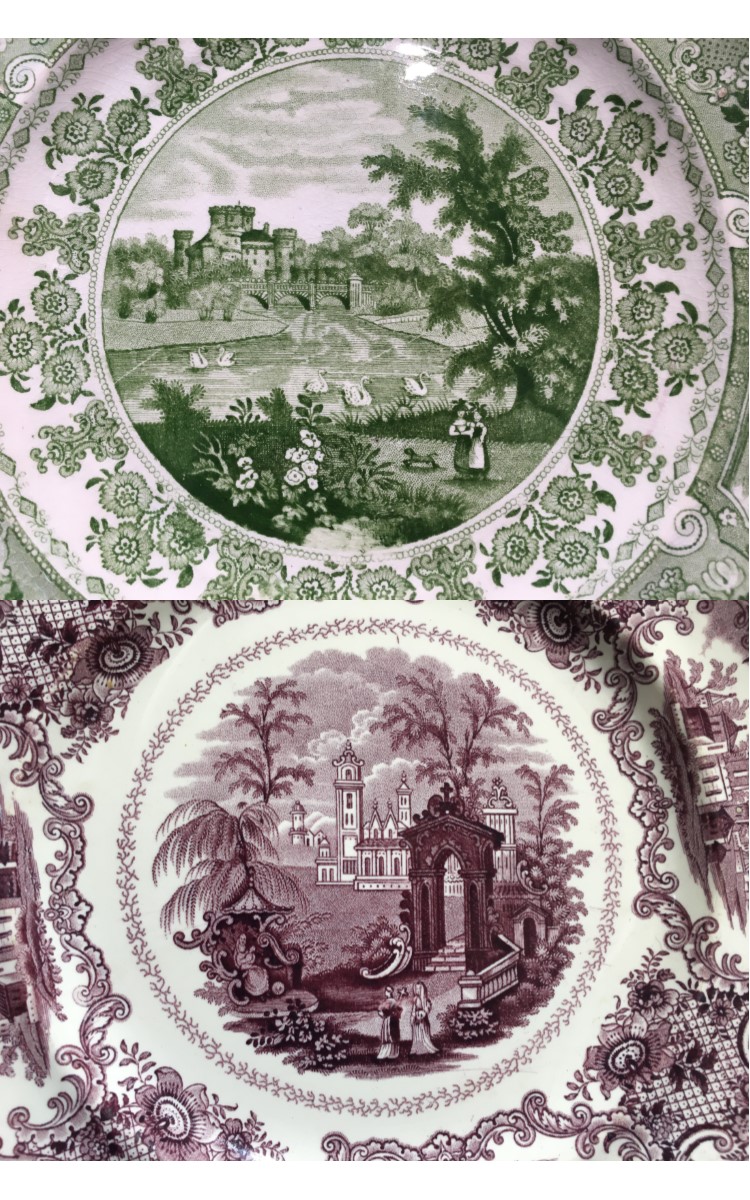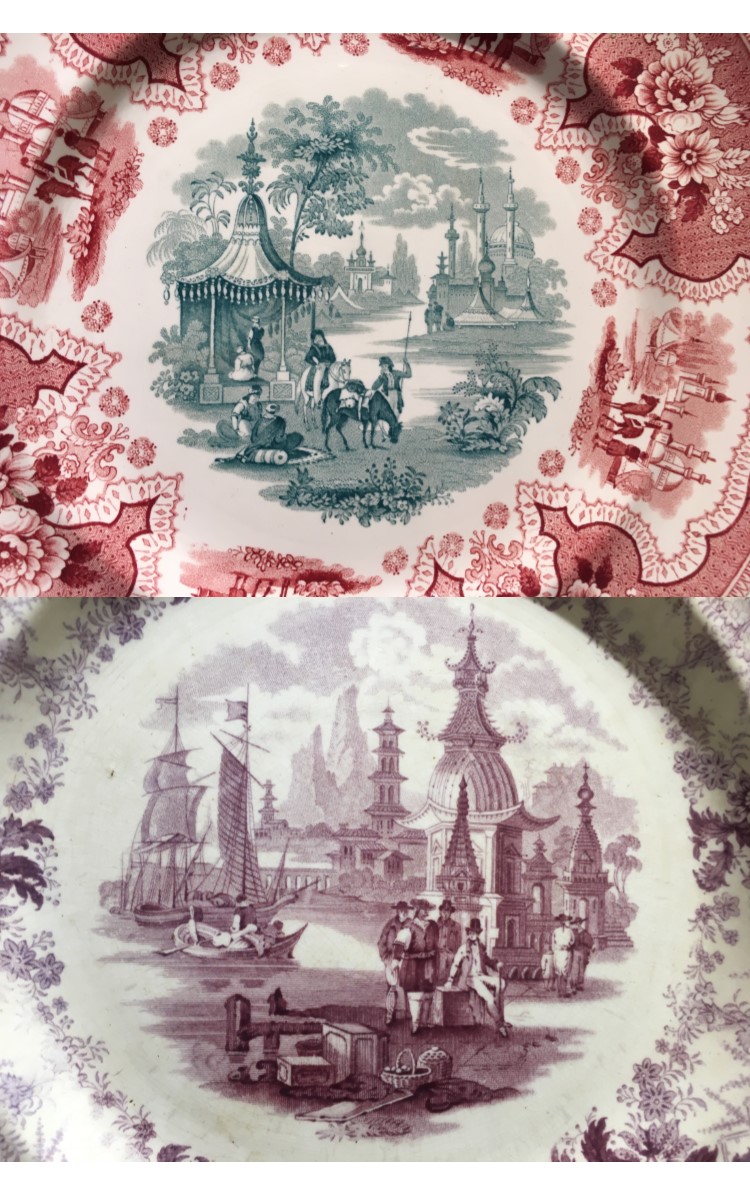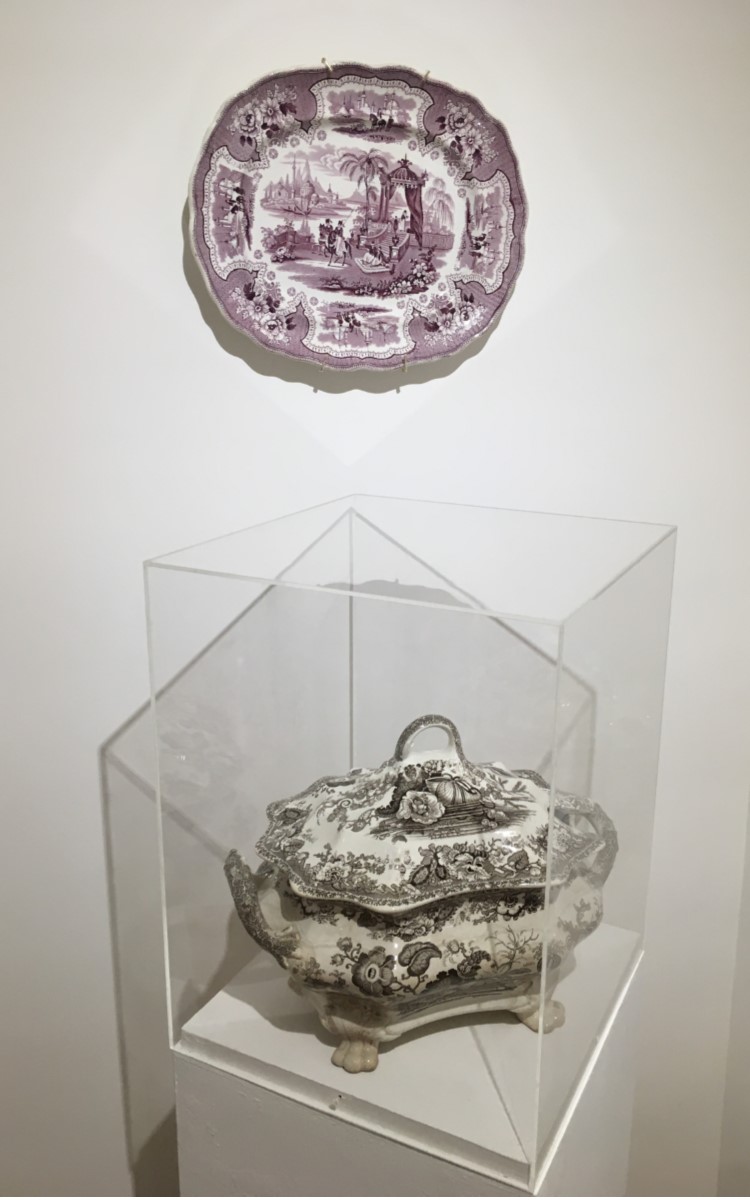Past Exhibitions
Ceramics
American Redware & Stoneware
and
English Staffordshire Transferware
This exhibition focuses on two very different aspects of our ceramic collection: American redware & stoneware, and English Staffordshire transferware. These are, in essence, two separate exhibitions. What ties the two subjects together is the fact that both types of ceramics were not only used in Oysterponds in the nineteenth century, but that they were used in this very building. When Village House was undergoing restoration over the last decade, one of the former presidents of OHS, Fredrica Wachsberger, an archaeologist by training, made certain that the workmen creating a new crawl space carefully set aside every sherd they came across while digging. Bags full of broken items appeared: glass, bones, leather, coins, metal, etc. – but also broken pieces of redware, stoneware, and many kinds of imported English ceramics including Staffordshire transferware. We are fortunate in having in the collection a nineteenth-century painting depicting the Hempstead Pottery on Sterling Harbor in Greenport. This was one of three important potteries in this part of the world – the others being in Huntington, Long Island, and Norwalk, Connecticut. We are also fortunate that Chris Pickerell, Marine Program Director of the Cornell Cooperative Extension, is also an expert on the products made in those potteries and was willing to examine our collection. The identification of virtually every piece of redware and stoneware in this exhibition is thanks to his expertise. We wish to express our gratitude to him for all his help.
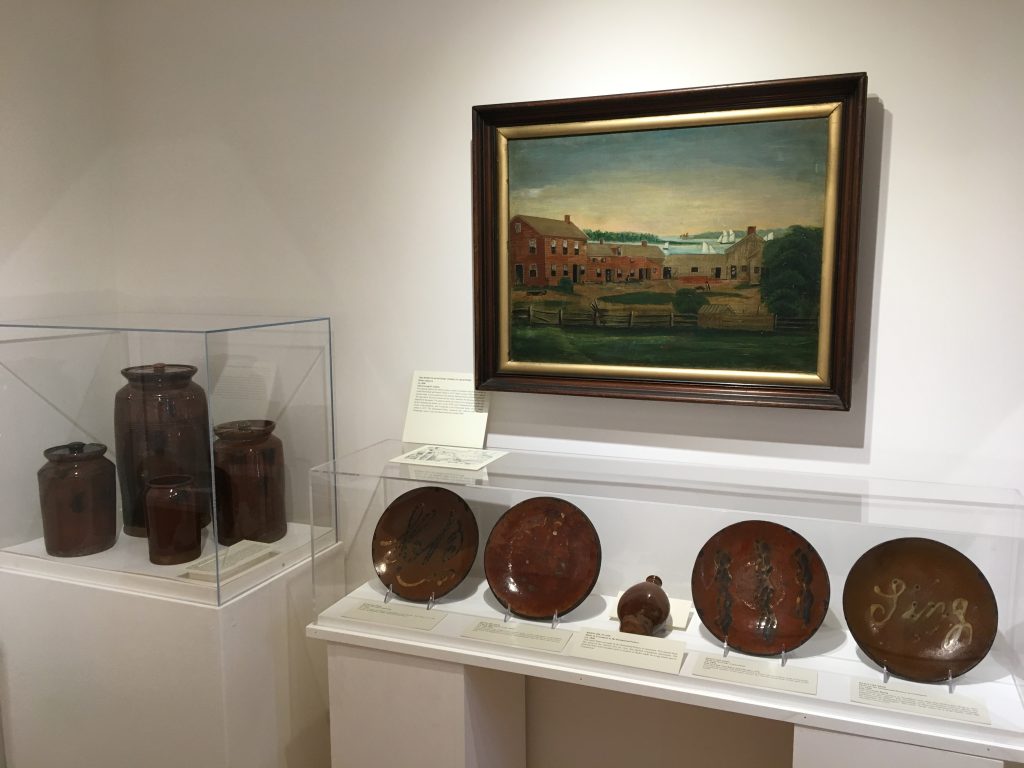
A major gift of Staffordshire transferware was recently given to OHS by Charles Dean. Not only did he donate many different and charming patterns, he also made certain that a variety of colors was included. We are very grateful to him not only for these gifts, but for his expert advice and help in installing the exhibition. As Staffordshire in England was blessed with deposits of clay ideal for producing pottery, a number of factories like Wedgwood were established there beginning in the eighteenth century. The invention of transferware (which refers to the fact that engraved, printed designs were transferred to the clay surface when the ink was still wet and then fired to fix the image) was a revolution in how quickly all sorts of tableware could be produced. Before that, each piece would have been hand-painted. By the early and middle decades of the nineteenth century numerous factories in Staffordshire were producing transferware for export in enormous
numbers. Although Americans were still making and using redware and stoneware, the new and fairly inexpensive wares from England began to flood the market beginning as early as the 1830s and 1840s. They changed the American kitchen and dining room forever.
Exhibit Items
top




